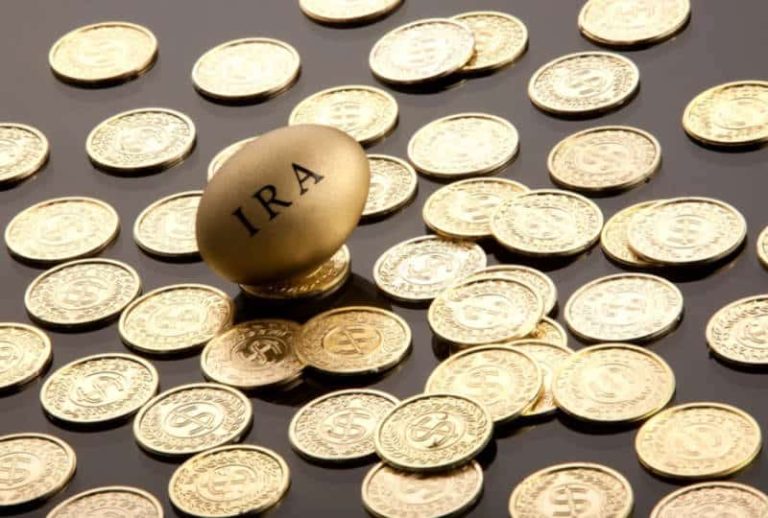
Let’s go over the basics of how to open a gold ira account. Opening a self-directed ira account involves the same steps, whether you want a gold ira, a silver ira , or an ira with other precious metals like platinum or palladium.
 Many expect a lengthy and complicated process, but it’s quite simple.
Many expect a lengthy and complicated process, but it’s quite simple.
A gold ira is a specialized retirement account. Gold iras follow the same standards and contribution limits as traditional and roth iras. Higher fees that are generally associated with gold iras. Gold is that shiny and alluring metal that has captivated humanity for centuries. The yellow metal is a tangible and durable asset with a track record of retaining or increasing its value during economic turmoil and political unrest. Diversifying your retirement portfolio with gold can be smart, even if you don’t think the economy is headed into a tailspin. The irs offers individual retirement accounts, known as iras, designed specifically to invest in this precious metal. https://www.irs.gov/retirement-plans/investments-in-collectibles-in-individually-directed-qualified-plan-accounts
You have other alternatives if you don’t feel gold stocks or etfs are a good fit for you. These could include physical gold, a gold ira, or a gold mutual fund.
What is a gold IRA?
Gold has been a popular investment option for centuries. Even before there were organized stock exchanges and gold mining companies, humans have always been fascinated by the shiny metal, using it for everything from trade to ornamentation to coinage.
 However, investing in actual gold bullion can be difficult, since it involves storage fees — and moving heavy, physical gold can be a challenge. This is one of the reasons that gold iras are popular. Unlike with traditional iras , gold iras are set up in a special way so that account owners can hold on to physical gold bullion, such as bars or ingots.
However, investing in actual gold bullion can be difficult, since it involves storage fees — and moving heavy, physical gold can be a challenge. This is one of the reasons that gold iras are popular. Unlike with traditional iras , gold iras are set up in a special way so that account owners can hold on to physical gold bullion, such as bars or ingots.
The goal of every investor, including those with retirement accounts , is to maximize returns and minimize risk. To achieve this two-fold goal, many retirement account holders are seeking to invest in alternative assets — assets outside of stocks, bonds, mutual funds, etfs and cds — that are the traditional investments allowed in retirement accounts. These investors have been able to invest in these alternative assets through self-directed iras (sdiras). The alternative assets supported by these sdiras include real estate , cryptocurrency and physical assets like gold, silver, platinum and palladium. Self-directed iras can be traditional ira (traditional sdira) or roth ira (roth sdira) and the same rules regarding contributions, income limits, and distributions apply to them as apply to mainstream iras.
retirement plans are essential to having financial stability when you leave your full-time jobs at retirement. Planning for it has become a challenge because of the rising cost of living, out-of-control printing of currency, and debilitating levels of global debt. It’s not an easy puzzle to solve and there are no one-size-fits-all answers. Because gold prices generally move in the opposite direction of other asset classes, it is a good idea to diversify your retirement portfolio with gold and other precious metals. It is a sensible approach that lessens the amount of risk, especially over the long term. Let’s take a look at just some of the more popular retirement plans that allow for the addition of precious metals.
What should you know about a gold IRA?
The challenge with iras is that they can look intimidating to maintain for anyone entirely new to the concept of retirement-age investing. However, the need for one increases every year, especially with the current state of the world. Having that in mind, goldco operates with the premise of making things easier to understand and more convenient for would-be clients. Various reviews point out that the staff of goldco are quite attentive and willing to assist clients through every step of whatever transaction they engage in. Aside from that, the company aims to educate investors regarding whatever transaction they make.
Our experts answer readers' investing questions and write unbiased product reviews ( here's how we assess investing products ). Paid non-client promotion: in some cases, we receive a commission from our partners. Our opinions are always our own. A gold ira is a type of individual retirement account that allows investors to hold physical gold or other precious metals, unlike standard iras. To hold gold in an ira, you need to create a self-directed account, administered by a specialist custodian who handles and stores the metal. While convenient, keeping gold in an ira carries high fees and doesn't take full advantage of ira tax benefits.
Ready to invest in gold? if so, you would want to learn how a gold ira can help. It is always a good idea to look into retirement investing , as this is something that you can fall back on sooner or later. Read this article for the basics on setting up a gold ira and what it can do for your retirement fund.
If you’re considering investing in a gold ira, it’s essential to understand the tax implications of your investment. Gold iras are an attractive option for many investors because they offer tax benefits and diversification within a retirement portfolio. In this comprehensive guide, we’ll discuss everything you need to know about gold ira tax rules, including the types of gold iras, contribution limits, tax treatment of gold ira investments, strategies to minimize taxes, and other important considerations.
To better understand what a gold ira is, you should understand the different types of iras that are available to investors. While they all perform similar functions, they are not the same. The three types of gold iras include: traditional gold iras: traditional gold iras are one of the more common types of gold iras. You fund these accounts with pretax dollars, so contributions grow on a tax-deferred basis. You will pay taxes when you withdraw funds during your retirement. Traditional gold iras have a yearly contribution limit of $6,000 for people under the age of 50. Roth iras: in contrast to traditional gold iras, roth gold iras receive post-tax contributions.
There are many different types of iras, each offering various benefits to investors. Depending on your financial situation, one may be preferable to another. Traditional gold ira – these are the most common type of gold iras. When you contribute money to a traditional ira, you can deduct that amount from your income when you file your taxes. This account type reduces your taxes in the year that you contribute. When you withdraw from a traditional ira, you pay income tax on the full amount withdrawn. Read more: traditional gold ira guide roth gold ira – roth iras are the reverse of a traditional ira.